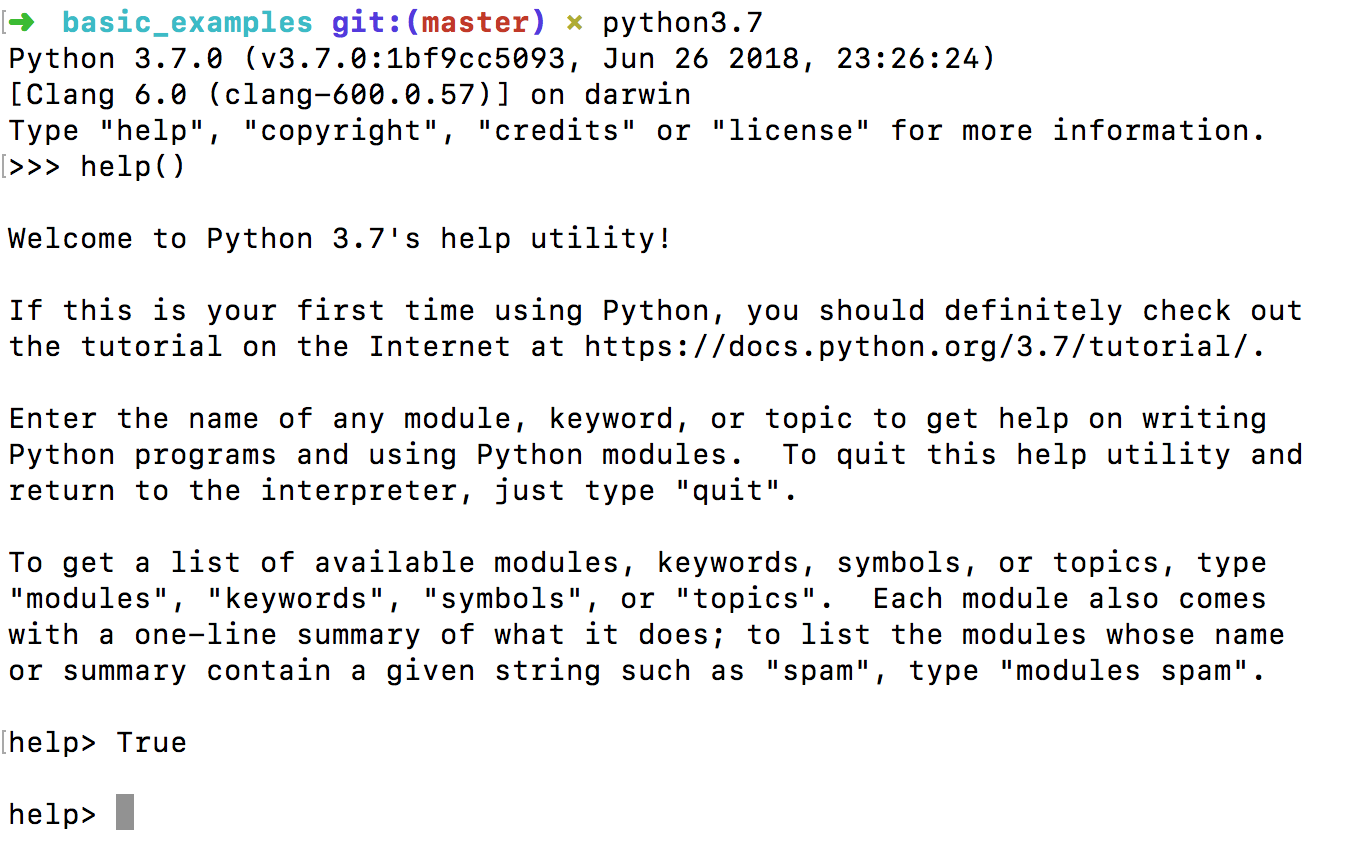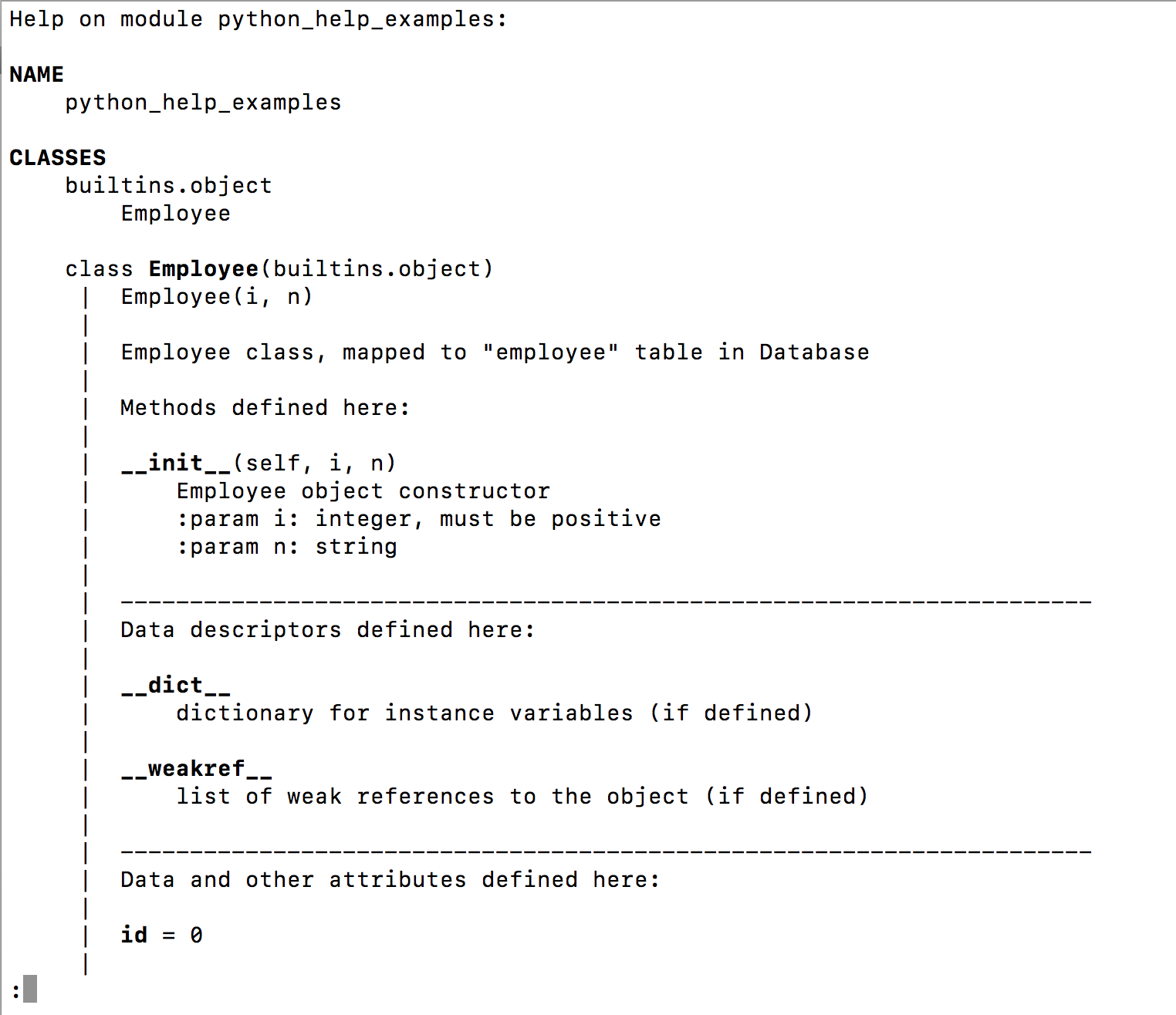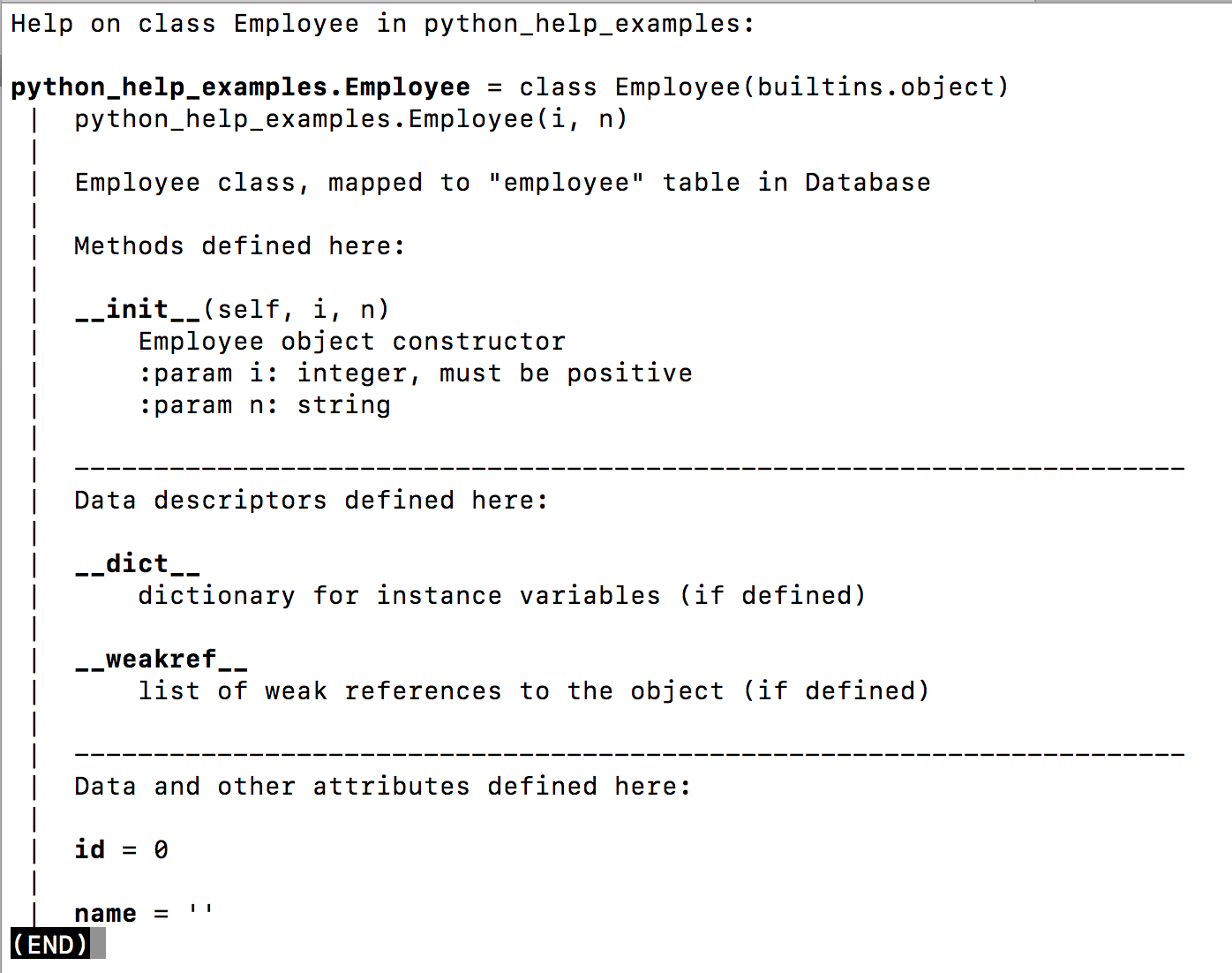Python的help()函数用于获取指定模块、类、函数、变量等的文档。通常与Python解释器控制台一起使用,以获取有关Python对象的详细信息。
Python的help()函数
Python的help()函数语法如下:
help([object])
如果没有给出参数,则交互式帮助系统将在解释器控制台上启动。 在Python的帮助控制台中,我们可以指定模块、类、函数的名称来获取它们的帮助文档。其中一些是:
在Python的帮助控制台中,我们可以指定模块、类、函数的名称来获取它们的帮助文档。其中一些是:
help> True
help> collections
help> builtins
help> modules
help> keywords
help> symbols
help> topics
help> LOOPING
如果要退出帮助控制台,请键入quit。我们还可以通过将参数传递给help()函数来直接从Python控制台获取帮助文档。
>>> help('collections')
>>> help(print)
>>> help(globals)
让我们看看对于globals()函数,help()函数的输出是什么。
>>> help('builtins.globals')
Help on built-in function globals in builtins:
builtins.globals = globals()
Return the dictionary containing the current scope's global variables.
NOTE: Updates to this dictionary *will* affect name lookups in the current global scope and vice-versa.
為自定義類和函數定義幫助(help())
我們可以通過定義文檔字符串(documentation string)來為我們的自定義類和函數定義幫助(help())函數的輸出。默認情況下,方法主體中的第一個註釋字符串被用作它的文檔字符串。它被三個雙引號包圍著。假設我們有一個名為python_help_examples.py的Python文件,其中包含以下代碼。
def add(x, y):
"""
This function adds the given integer arguments
:param x: integer
:param y: integer
:return: integer
"""
return x + y
class Employee:
"""
Employee class, mapped to "employee" table in Database
"""
id = 0
name = ''
def __init__(self, i, n):
"""
Employee object constructor
:param i: integer, must be positive
:param n: string
"""
self.id = i
self.name = n
請注意,我們為函數、類和其方法定義了文檔字符串。您應該遵循一些文檔格式,我使用PyCharm IDE自動生成了其中的一部分。可以參考NumPy文檔字符串指南來了解幫助文檔的正確撰寫方式。現在讓我們看看如何在Python控制台中獲取這個文檔字符串作為幫助文檔。首先,我們需要在控制台中執行此腳本以加載我們的函數和類定義。可以使用exec()命令來執行此操作。
>>> exec(open("python_help_examples.py").read())
我們可以使用globals()命令來驗證函數和類定義是否存在。
>>> globals()
{'__name__': '__main__', '__doc__': None, '__package__': None, '__loader__': <class '_frozen_importlib.BuiltinImporter'>, '__spec__': None, '__annotations__': {}, '__builtins__': <module 'builtins' (built-in)>, '__warningregistry__': {'version': 0}, 'add': <function add at 0x100dda1e0>, 'Employee': <class '__main__.Employee'>}
請注意,’Employee’和’add’存在於全域作用域字典中。現在我們可以使用help()函數獲取幫助文檔。以下是一些示例。
>>> help('python_help_examples')

>>> help('python_help_examples.add')
Help on function add in python_help_examples:
python_help_examples.add = add(x, y)
This function adds the given integer arguments
:param x: integer
:param y: integer
:return: integer
(END)

>>> help('python_help_examples.Employee')

>>> help('python_help_examples.Employee.__init__')
Help on function __init__ in python_help_examples.Employee:
python_help_examples.Employee.__init__ = __init__(self, i, n)
Employee object constructor
:param i: integer, must be positive
:param n: string
(END)

概要
Python的help()函数非常有助于获取有关模块、类和函数的详细信息。最佳实践是为自定义类和函数定义docstring以解释它们的用法。
您可以从我们的GitHub存储库中查看完整的Python脚本和更多Python示例。
参考资料:官方文档
Source:
https://www.digitalocean.com/community/tutorials/python-help-function













